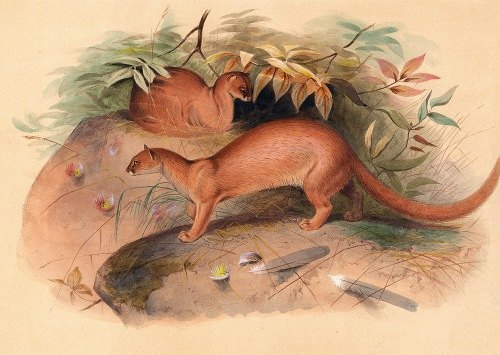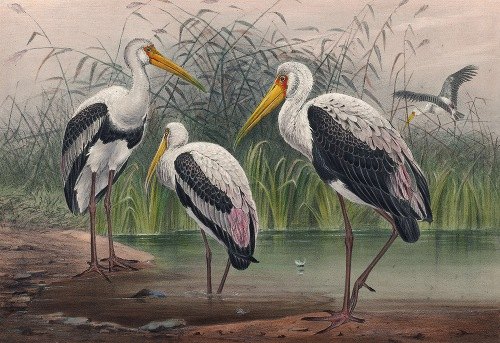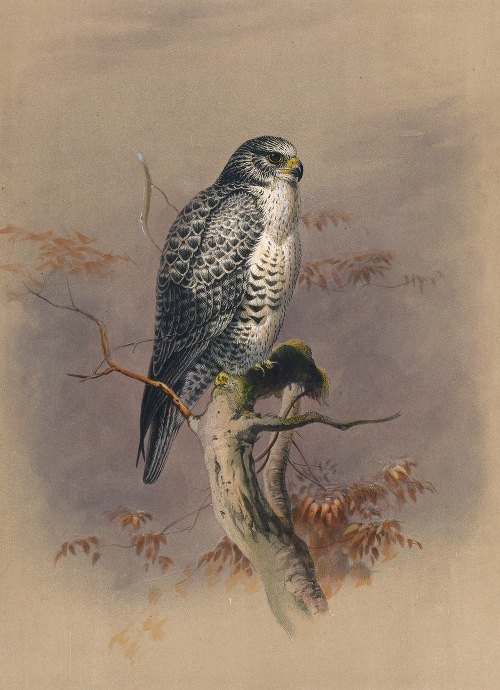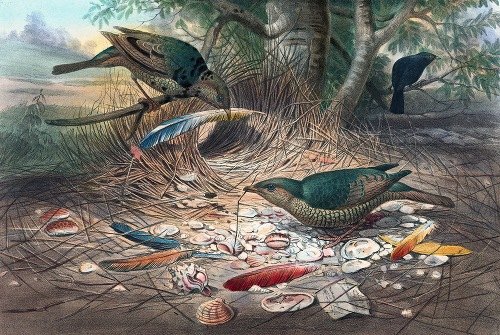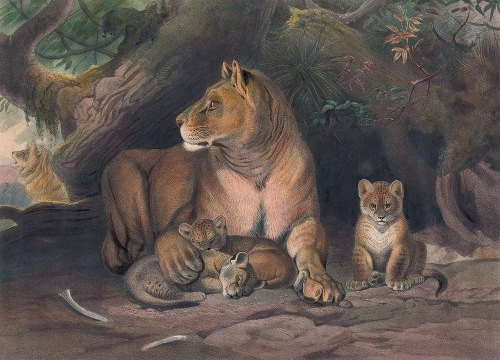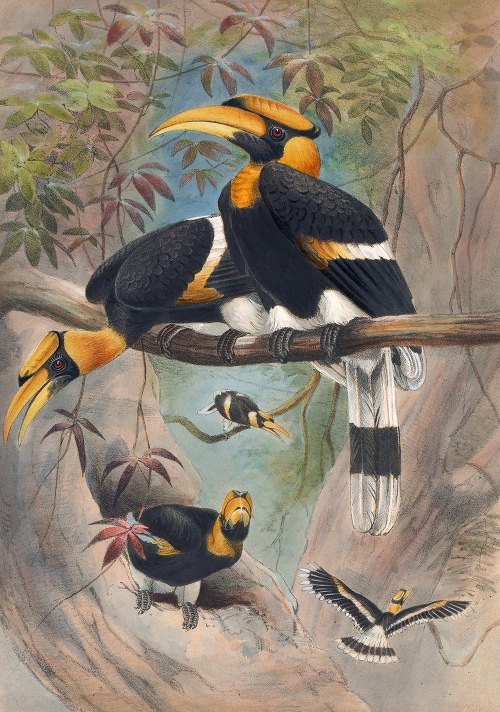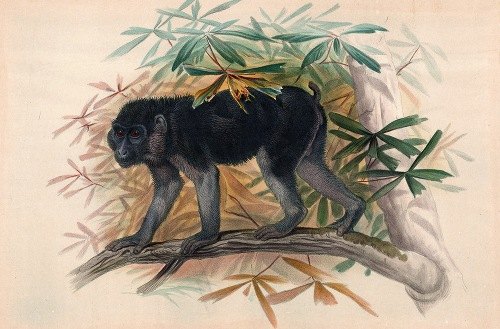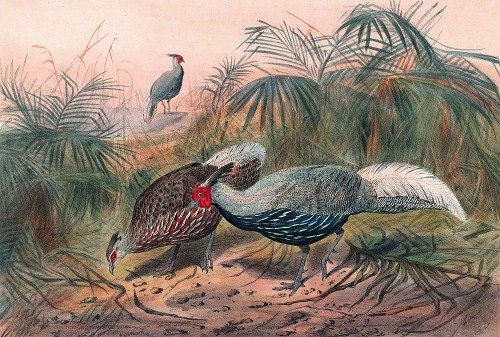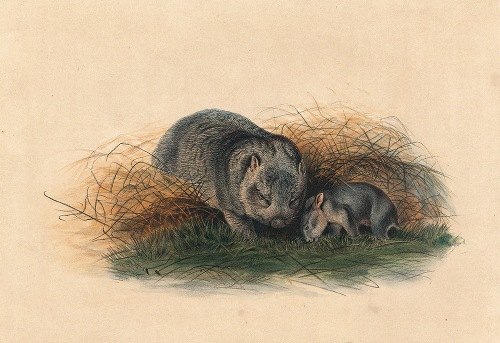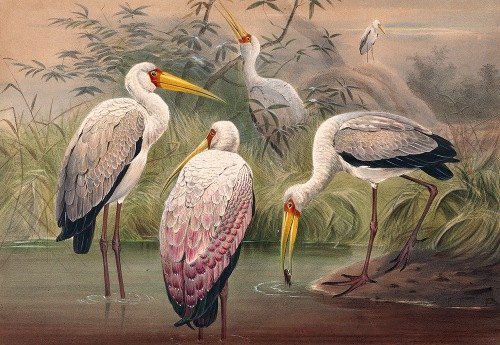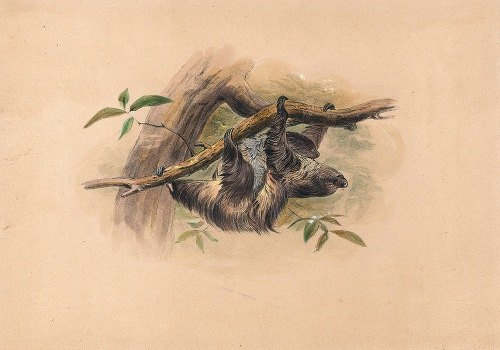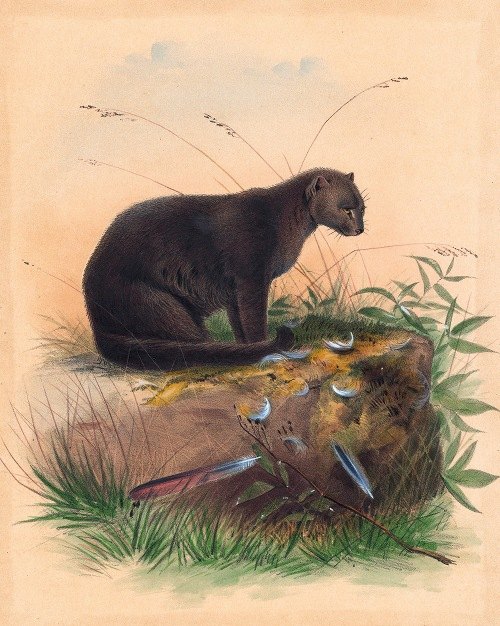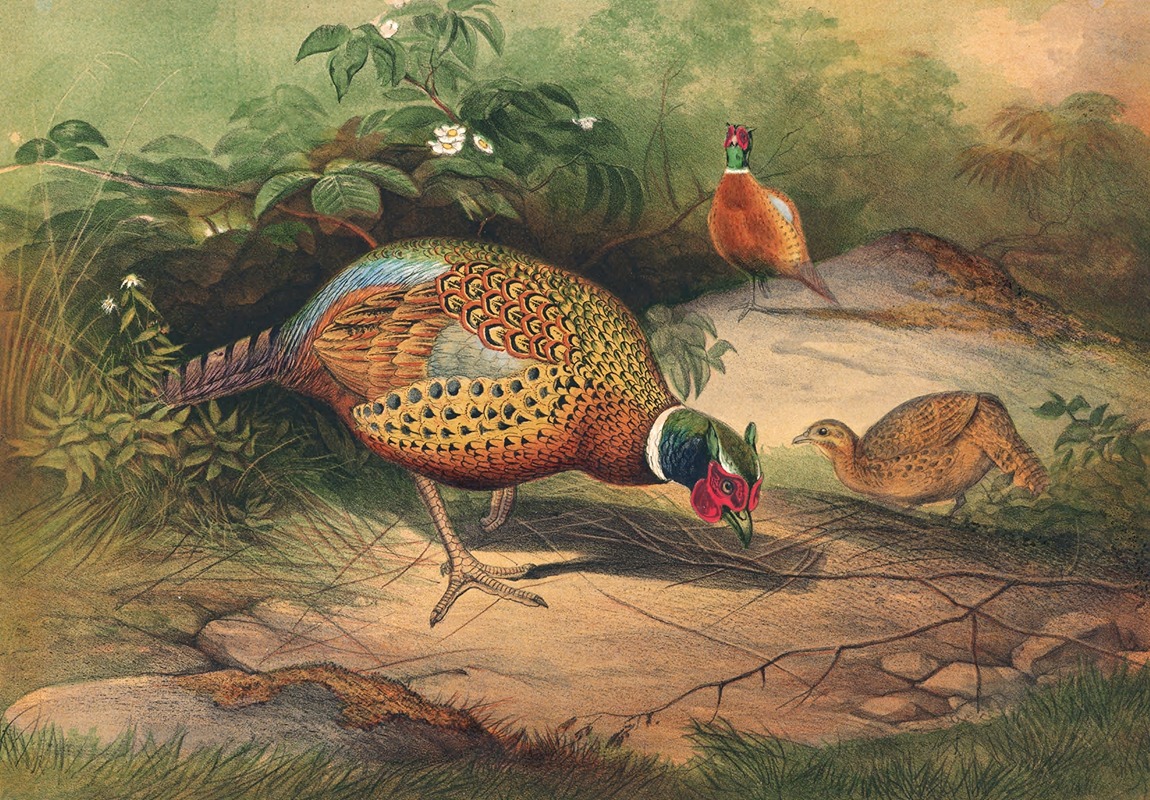
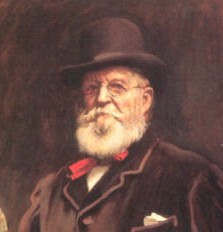
Joseph Wolf was a German artist who specialized in natural history illustration. He moved to the British Museum in 1848 and became the preferred illustrator for explorers and naturalists including David Livingstone, Alfred Russel Wallace and Henry Walter Bates. Wolf depicted animals accurately in lifelike postures and is considered one of the great pioneers of wildlife art. Sir Edwin Landseer thought him "...without exception, the best all-round animal artist who ever lived".
Joseph was the first son of a farmer, Anton Wolf, and was born in Mörz, near Münstermaifeld, then in Rhenish Prussia, not far from the river Moselle, in the Eifel region. He was originally called Mathias but later went by the name of Joseph. In his boyhood he assiduously studied bird and animal life, and showed a remarkable capacity as a draughtsman of natural history subjects. He showed an early talent for art by cutting paper silhouettes of birds and animals which he pasted onto windows. He later took an interest in hunting. He made himself brushes from the fur of a stone marten, and drew illustrations of birds that he raised from the nest or found near his home. He took a special interest in birds of prey, and considered art as a career but realized at the age of sixteen that he needed more training to be professional. With support from his father he was apprenticed to a firm of lithographers, Gebrüder Becker at Koblenz. Here he found his first illustrated ornithology book (by Johann Conrad Susemihl—he went on to illustrate a later edition of it in the collection of a trader with an interest in birds, and was surprised by the poor quality of the plates).
Wolf travelled to Frankfurt and introduced himself as a lithographer to the ornithologist Eduard Rüppell. Rüppell was just beginning to work on the birds of Abyssinia and he encouraged Wolf to work for him either by living in Frankfurt or Darmstadt where he suggested Wolf could work for Johann Jakob Kaup. Wolf moved to Darmstadt but went on working on Rüppell's The Birds of North-East Africa. Kaup was impressed by his abilities and took one of Wolf's sketchbooks to a meeting in Leyden to show to Hermann Schlegel at the Natural History Museum, Leiden. Schlegel immediately commissioned Wolf to work on some plates for Traité de Fauconnerie. The result was a set of "magnificent paintings of birds of prey in life size" which established Wolf's reputation in Europe.
At the age of 20, Wolf was to appear at Maien to join the Army. As a fit young man with sharp-shooting abilities he could not be rejected, but it was peacetime and the surgeon, who knew him, helped him avoid recruitment under the pretext of a weak chest. Back in Darmstadt, Wolf went on working on bird plates, and joined an art school where he worked on portraits, landscapes and copying of works in the Darmstadt Gallery. He was a keen observer of wild birds and once had a pit dug in which he sat all day to watch the courtship of black grouse. In 1847, he left Darmstadt to join the Antwerp Academy to learn the Dutch oil painting techniques. Around this time, Kaup visited the British Museum, he was asked about the German artist who did the plates for Schlegel's book, and Wolf was invited to London to illustrate the genera of birds for a book by George Robert Gray.
Wolf's abilities were widely acclaimed even in his lifetime. Wolf established wildlife art as a genre and his observation of living birds allowed him to produce illustrations in very accurate and lifelike stances. On occasion he would come back from a trip and produce very accurate sketches from memory. He was very careful in his observation of feather patterns and when he read the works of Sundevall and Nitzsch on pterylography, he had nothing new to learn. The zoologist Alfred Newton called him "the greatest of all animal painters", while Landseer said that Wolf must have been a bird before he became a man. Wolf made numerous drawings in pen and charcoal as well as lithographs for scholarly societies such as the Zoological Society of London (he produced 340 "attractive" colour plates for the ZSL Proceedings in the course of 30 years), and a very large number of illustrations for books on natural history and travel published from various countries; and was considerably successful as a painter as well. Until 1946, the cover of the journal Ibis carried a woodcut by Wolf of an ibis against a background with ruins, a pyramid and a rising sun. In 1946 the sun was removed from the background; the design was entirely changed in 1948 due to excessive wear of the block. In 1865, J. H. Gurney named a species of harrier after Wolf, but it was found to be an already described species. Wolf died in London, surrounded by his pet birds. He is buried in Highgate East cemetery.
